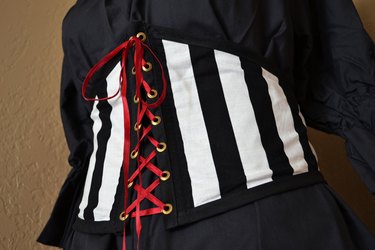
A corset is an essential item for a costume of a character from Medieval to Victorian times. In addition to this usage, many women incorporate corsets into their personal wardrobe. Corsets you purchase from a store can be expensive and may not fit you very well. However, making your own corset can be a hassle because working with boning is a rather tedious task. There is a way, though, to make a beautiful corset without boning that gives you the support and look you want.
Things You'll Need
Computer with Internet access
Measuring tape
Butcher paper
Upholstery fabric
Matching thread
Fabric scissors
Heavy fabric interfacing
Iron
Sewing machine
20 grommets
Ribbon
Video of the Day
Step 1
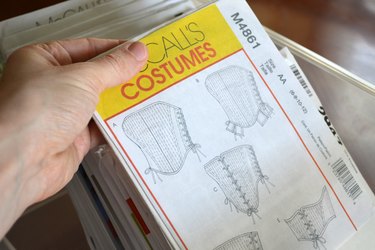
Buy a corset pattern or make your own. To make your own corset pattern, go to the "Corset Pattern Generator" link in the "Resources" section of this article. Enter your measurements on that site, trace the resulting pattern on a piece of butcher paper and cut it out.
Video of the Day
Step 2
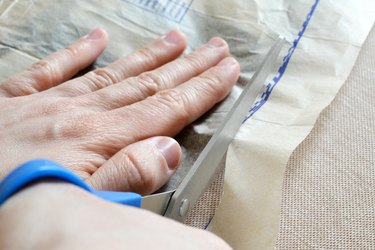
Fold your fabric in half and lay the pattern on top of it, with the longer edge bordering the fold. Cut along the edges of the pattern without cutting the fold. This fabric piece will be the outer layer of your corset. Repeat this process to create the inner layer of the corset.
Step 3
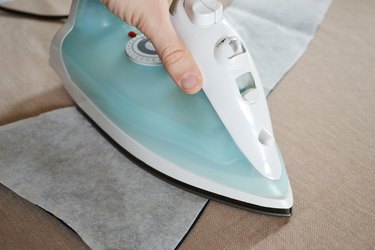
Cut out a piece of interfacing that will cover the inner piece of your corset. Lay this piece of interfacing (adhesive side down) onto the wrong side of the piece of fabric. Iron the interfacing until it is fused onto the fabric. Cut around the edges of the fabric so that no excess interfacing is hanging off the edges.
Step 4
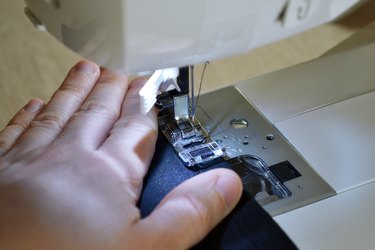
Lay the inner corset piece onto the outer corset piece (right sides together) and sew them together all the way around, leaving an opening at the bottom of about 4 inches. Use this opening to turn the corset right side out and hand stitch the opening closed.
Step 5

Insert the grommets on either end of the corset, following the instructions on the grommet package. The grommets should be about 1 inch apart. Thread the ribbon through the grommets.
Tip
The side of the interfacing that has adhesive will be bumpy, whereas the side of the interfacing that does not have adhesive will be slightly fuzzy.